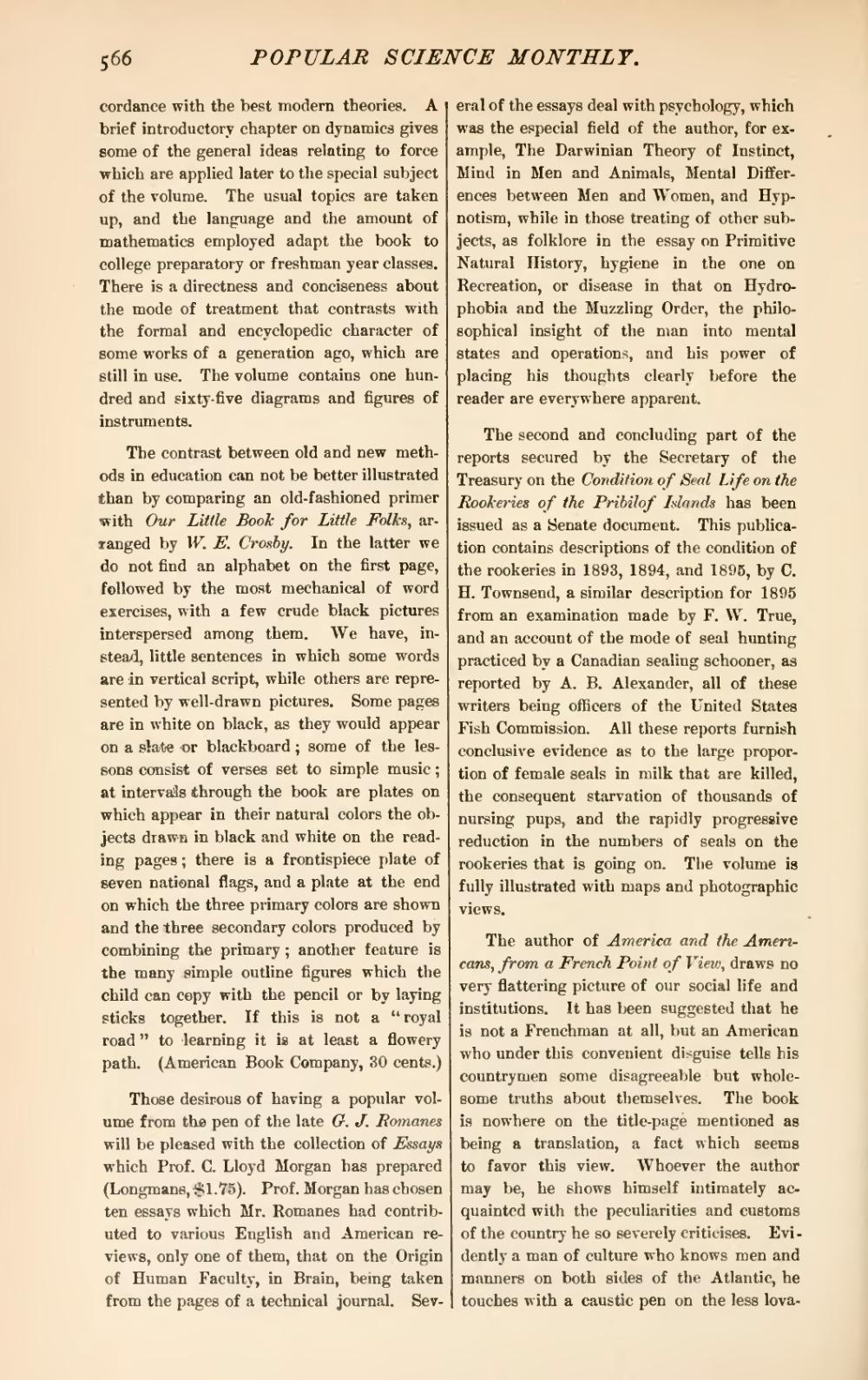cordance with the best modern theories. A brief introductory chapter on dynamics gives some of the general ideas relating to force which are applied later to the special subject of the volume. The usual topics are taken up, and the language and the amount of mathematics employed adapt the book to college preparatory or freshman year classes. There is a directness and conciseness about the mode of treatment that contrasts with the formal and encyclopedic character of some works of a generation ago, which are still in use. The volume contains one hundred and sixty-five diagrams and figures of instruments.
The contrast between old and new methods in education can not be better illustrated than by comparing an old-fashioned primer with Our Little Book for Little Folks, arranged by W. E. Crosby. In the latter we do not find an alphabet on the first page, followed by the most mechanical of word exercises, with a few crude black pictures interspersed among them. We have, instead, little sentences in which some words are in vertical script, while others are represented by well-drawn pictures. Some pages are in white on black, as they would appear on a slate or blackboard; some of the lessons consist of verses set to simple music; at intervals through the book are plates on which appear in their natural colors the objects drawn in black and white on the reading pages; there is a frontispiece plate of seven national flags, and a plate at the end on which the three primary colors are shown and the three secondary colors produced by combining the primary; another feature is the many simple outline figures which the child can copy with the pencil or by laying sticks together. If this is not a "royal road" to learning it is at least a flowery path. (American Book Company, 30 cents.)
Those desirous of having a popular volume from the pen of the late G. J. Romanes will be pleased with the collection of Essays which Prof. G. Lloyd Morgan has prepared (Longmans, $1.75). Prof. Morgan has chosen ten essays which Mr. Romanes had contributed to various English and American reviews, only one of them, that on the Origin of Human Faculty, in Brain, being taken from the pages of a technical journal. Several of the essays deal with psychology, which was the especial field of the author, for example. The Darwinian Theory of Instinct, Mind in Men and Animals, Mental Differences between Men and Women, and Hypnotism, while in those treating of other subjects, as folklore in the essay on Primitive Natural History, hygiene in the one on Recreation, or disease in that on Hydrophobia and the Muzzling Order, the philosophical insight of the man into mental states and operations, and his power of placing his thoughts clearly before the reader are everywhere apparent.
The second and concluding part of the reports secured by the Secretary of the Treasury on the Condition of Seal Life on the Rookeries of the Pribilof Islands has been issued as a Senate document. This publication contains descriptions of the condition of the rookeries in 1893, 1894, and 1895, by C. H. Townsend, a similar description for 1895 from an examination made by F. W. True, and an account of the mode of seal hunting practiced by a Canadian sealing schooner, as reported by A. B. Alexander, all of these writers being officers of the United States Fish Commission. All these reports furnish conclusive evidence as to the large proportion of female seals in milk that are killed, the consequent starvation of thousands of nursing pups, and the rapidly progressive reduction in the numbers of seals on the rookeries that is going on. The volume is fully illustrated with maps and photographic views.
The author of America and the Americans, from a French Point of View, draws no very flattering picture of our social life and institutions. It has been suggested that he is not a Frenchman at all, but an American who under this convenient disguise tells his countrymen some disagreeable but wholesome truths about themselves. The book is nowhere on the title-page mentioned as being a translation, a fact which seems to favor this view. Whoever the author may be, he shows himself intimately acquainted with the peculiarities and customs of the country he so severely criticises. Evidently a man of culture who knows men and manners on both sides of the Atlantic, he touches with a caustic pen on the less lova-
